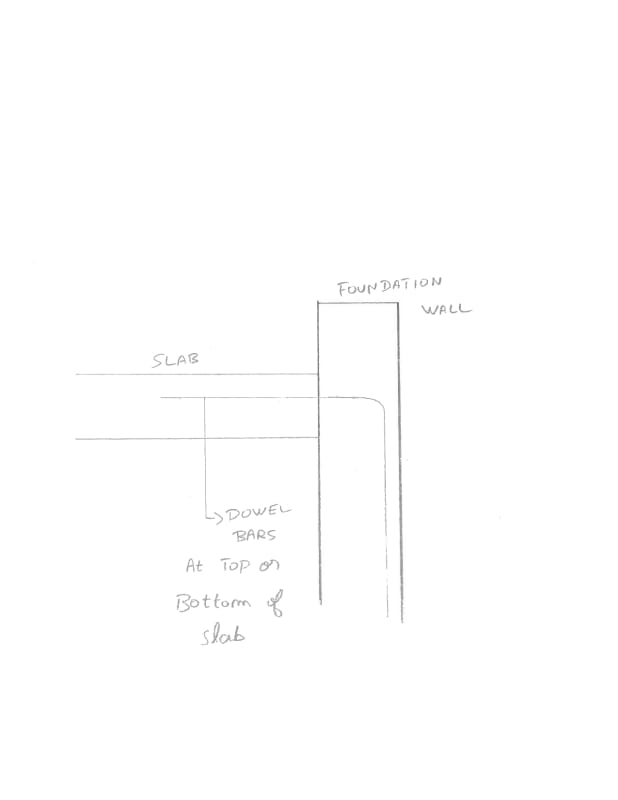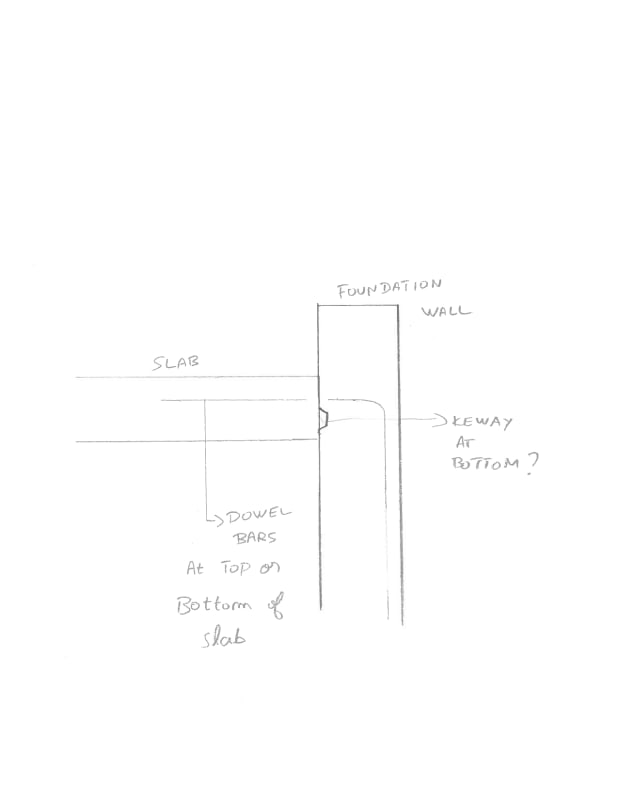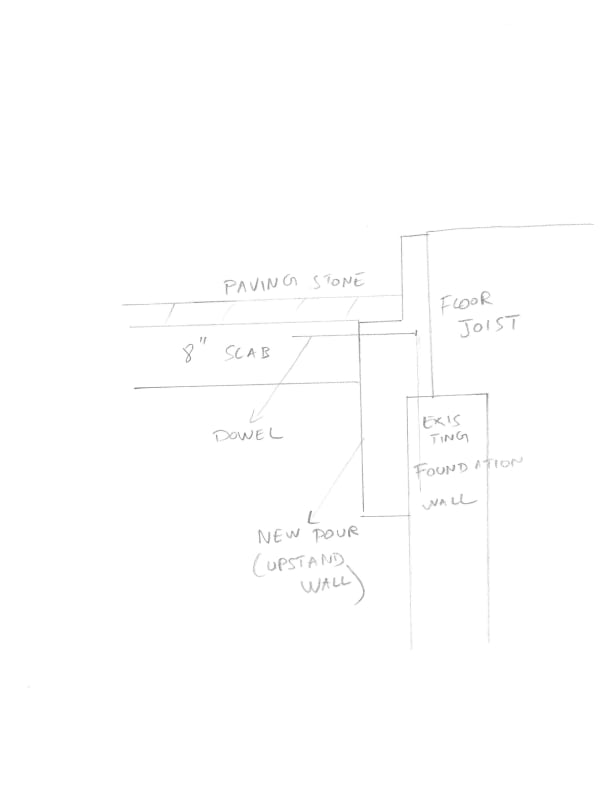Vrpps EIT
Structural
- Aug 21, 2018
- 58
Hi all,
In case we need to support a concrete slab (patio) and considered it to be a structural slab. Should the dowel bars be at the top of slab and then into the foundation wall or the dowel at the bottom of slab then into the foundation wall. Attached an image of it, there is no bearing available to rest the slab on top of the wall. so dowel is the structural element that is going to connect the slab into the wall and its going to bear the weight of the slab and transfer it into the foundation wall. Appreciate if anybody could help me understand this!
Thank you

In case we need to support a concrete slab (patio) and considered it to be a structural slab. Should the dowel bars be at the top of slab and then into the foundation wall or the dowel at the bottom of slab then into the foundation wall. Attached an image of it, there is no bearing available to rest the slab on top of the wall. so dowel is the structural element that is going to connect the slab into the wall and its going to bear the weight of the slab and transfer it into the foundation wall. Appreciate if anybody could help me understand this!
Thank you





